Overview
Produced a tea ceremony at the contemporary teahouse ‘Veneti-An’ by Takaaki Fuji, Hiroya Inage and De Yuan Kang at the exhibition ‘TIME SPACE EXISTENCE’ at the Venice Biennale International Architecture Exhibition. Over 100 guests, including exhibition organisers, media representatives and Venetian citizens, were entertained over two days with ancient and modern decorations. The tea ceremony created an opportunity for the guests to feel the connection between people and people and between people and nature, and at the same time to experience the architectural potential of the Venetian Hermitage through the tea ceremony.
【Introduction of Veneti-An(Text by Takaaki Fuji, Hiroya Inage, De Yuan Kang)】
1.People to People relationships
In the wake of events such as the outbreak of Covid and ongoing Wars, today’s world remains divided. Tea plays a role in different cultures around the world, all of which have incommon that it is a catalyst for communication that connects people.While the influence of the pandemic has reached a limited extent, the global situation is by no means perfect. With this in mind, we wish to launch an initiative create a space to for people to connect.
2.Universality and Specificity
This project envisaged the tearoom as a Communication Space, embodying a universality that allows for implementation in different parts of the world, while also embodying its specificity to ards the local context. This led to a focus on the Earth’s latitude and waste produced and eventually the adaptation of waste characteristic of Italy(pasta,coffee,corkandpaper)as building materials to construct the Teahouse.
Modulating the permeability according to latitude enables the quality of light and wind to be controlled and adapted appropriately to the region. While the design parameters are common, with different geographical locations, the latitude and waste materials change, resulting in a teahouse that is distinct to its context.
3.Water
While concerns of Water Scarcity is widespread around the world, Venice, a sea-bound city, is particularly deeply acquainted with Water, with the fluctuation between drying canals and flooding caused by the Aqua Alta. Looking back in history, since humanity began building dwellings, architectural history has been marked in part by the control of water. Water-resistant materials such as wood, metal, glass, stone and tiles came into use, and buildings are made practically from the same basic materials all over the world.In times, water has been desired while in other cases efforts were made to resist it.The structure of the Veneti-An consists of materials such as pasta and paper, both of which are extremely vulnerable to water. A new technology has been employed to enhance water resistance of these materials. Through chemical processing, it renders any organic material water-resistant properties, whilst keeping the material’s natural properties to eventually decompose back into the soil. This opens vast possibilities for materials suit able for outdoor use. Needless to say, tea is never without water, and Venetian is set in a park over looking the lagoon. Visitors are invited to savour tea made from water, gaze out at the sight of water and be enveloped in a tea house made of a new material that resists water. Fittingly, the exhibition displays the Biennale’s theme, ‘Laboratories of the Future’.
4.Sustainability
Following the exhibition period, the teahouse made of waste materials can be disassembled and reconstituted as furniture. The dimensions of the parts were determined on the premise of turning into furniture, or perhaps it would have been better to describe it as furniture transformed into a tea house for the duration of the exhibition only. The pieces will be reassembled into the form desired by prospective buyers and transformed into shelves and tables after the exhibition is over. Blockchain is being considered to enable tracing of where and to whom the components were passed to after the exhibition is over. 3D data will also be shared to enable the replacement and production parts by individuals, e.g. by 3D printing. This is neither 100% manufactured nor 100% self-built, It is a piece of furniture that allows for modification and addition of a personal touch.
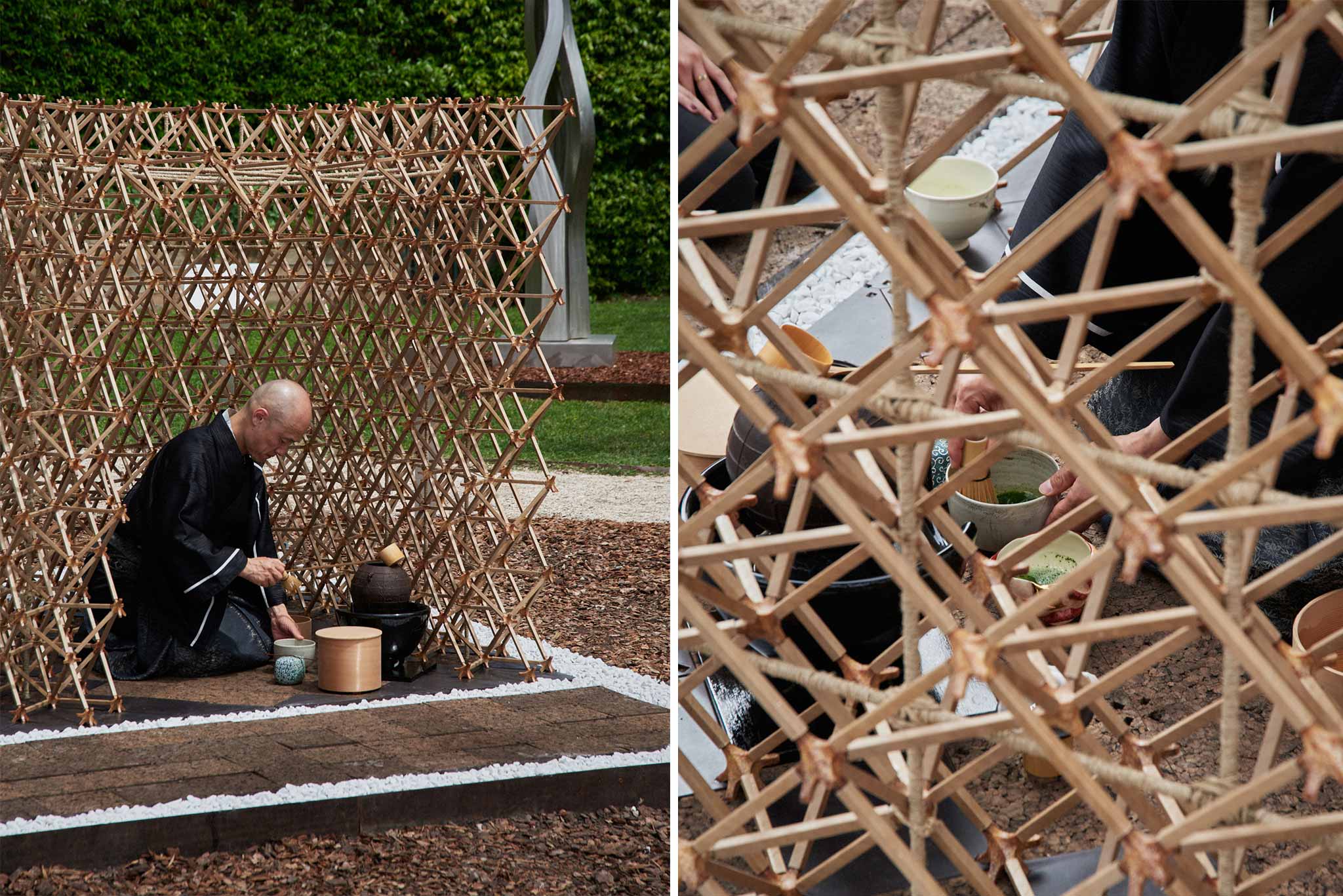
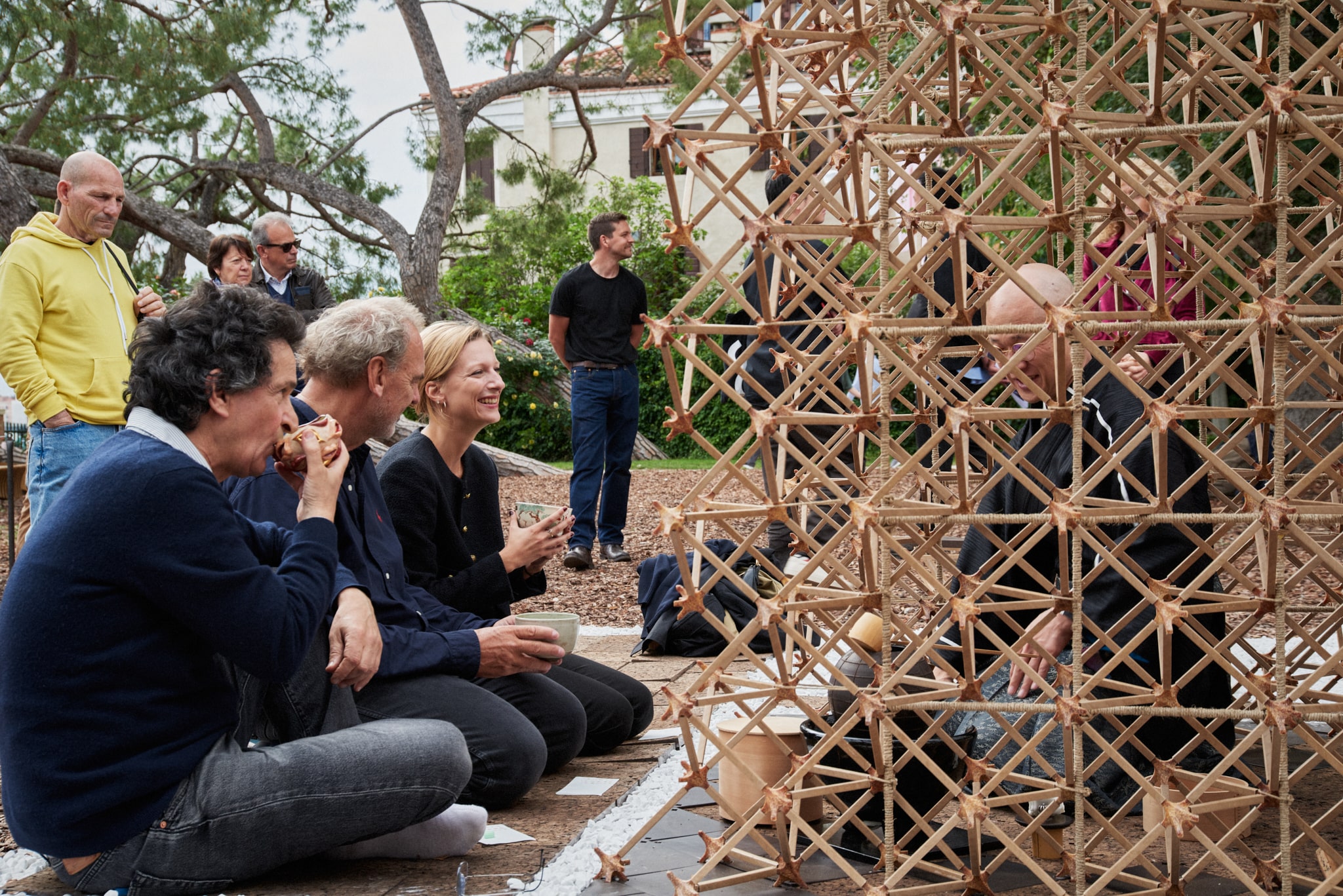
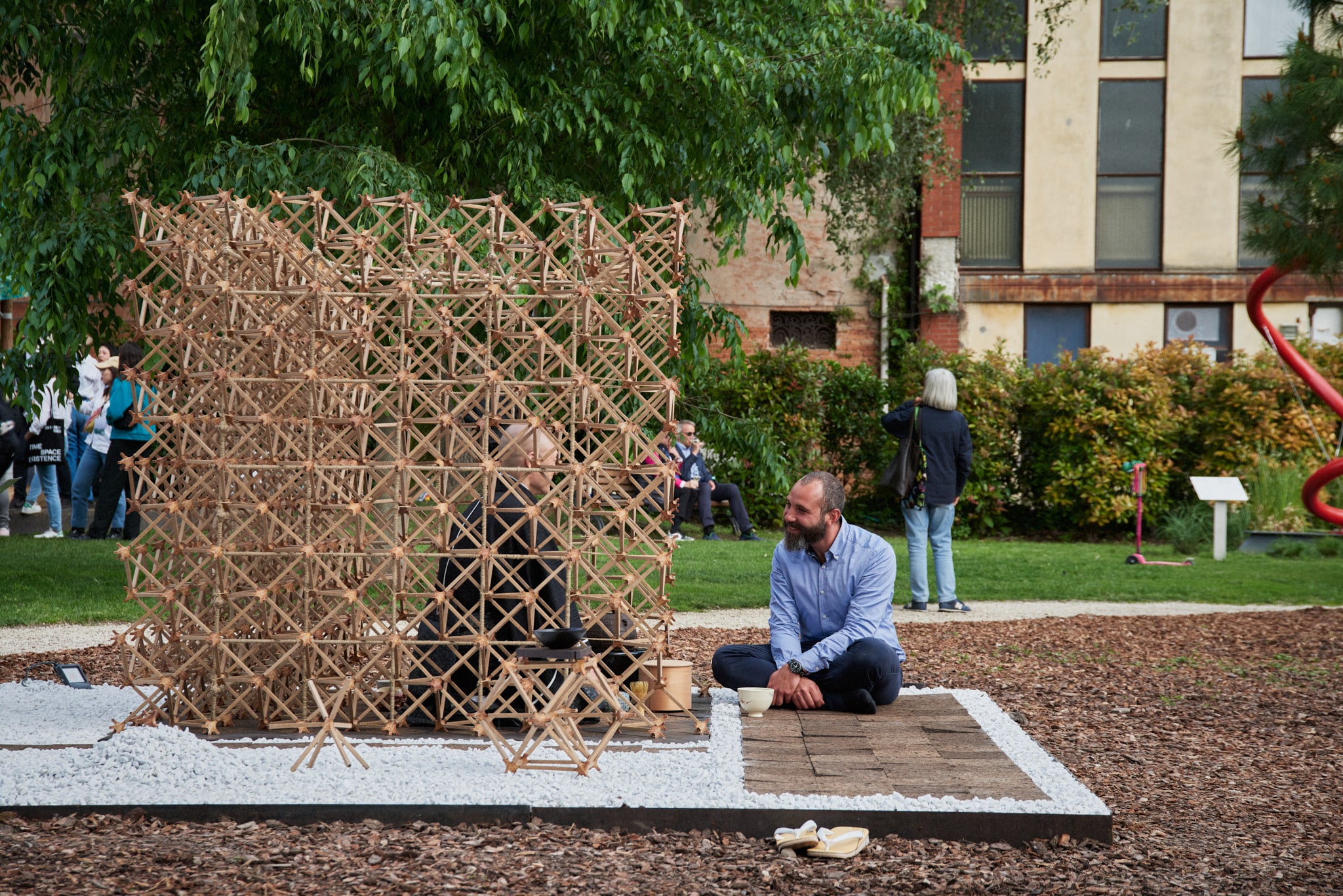
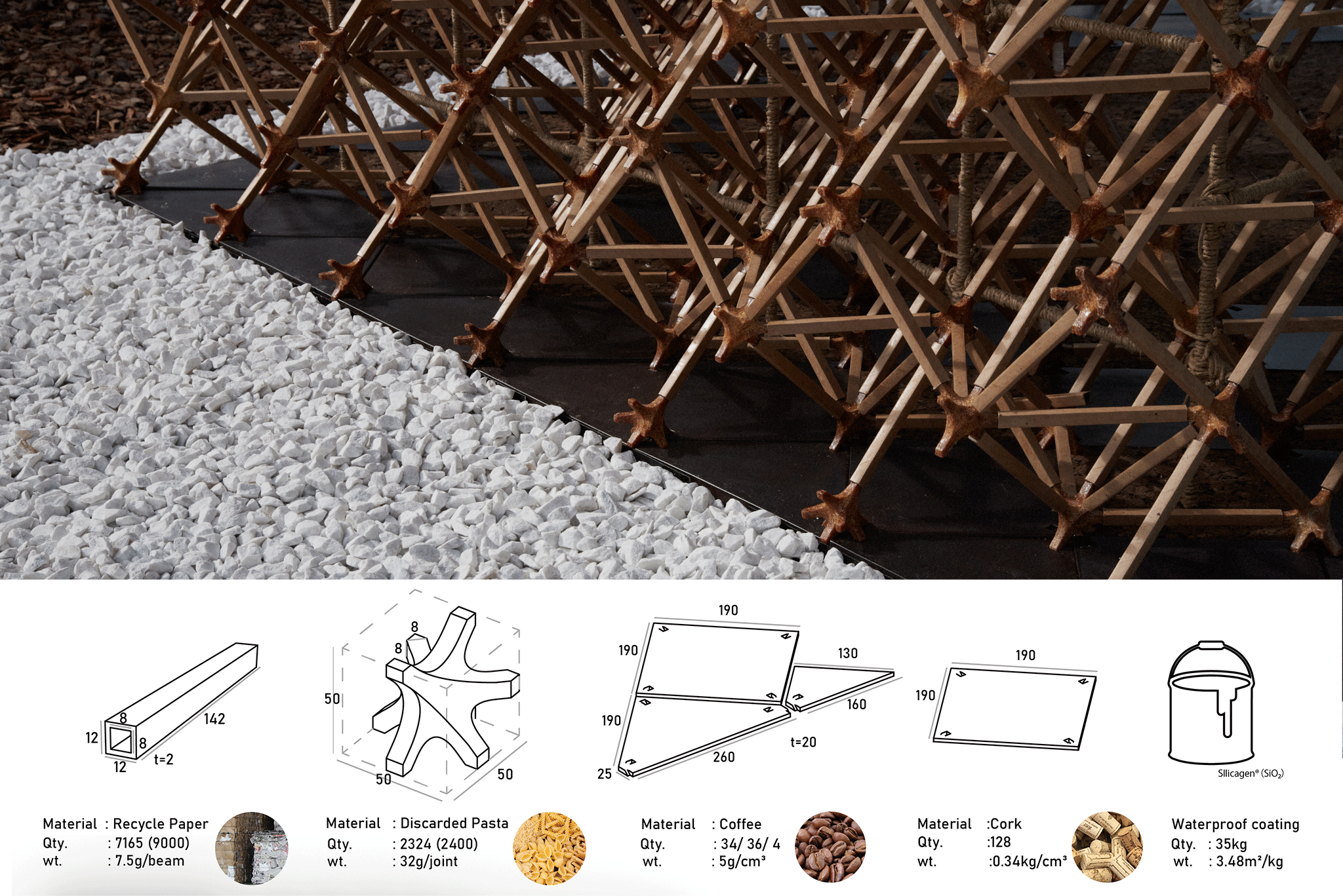
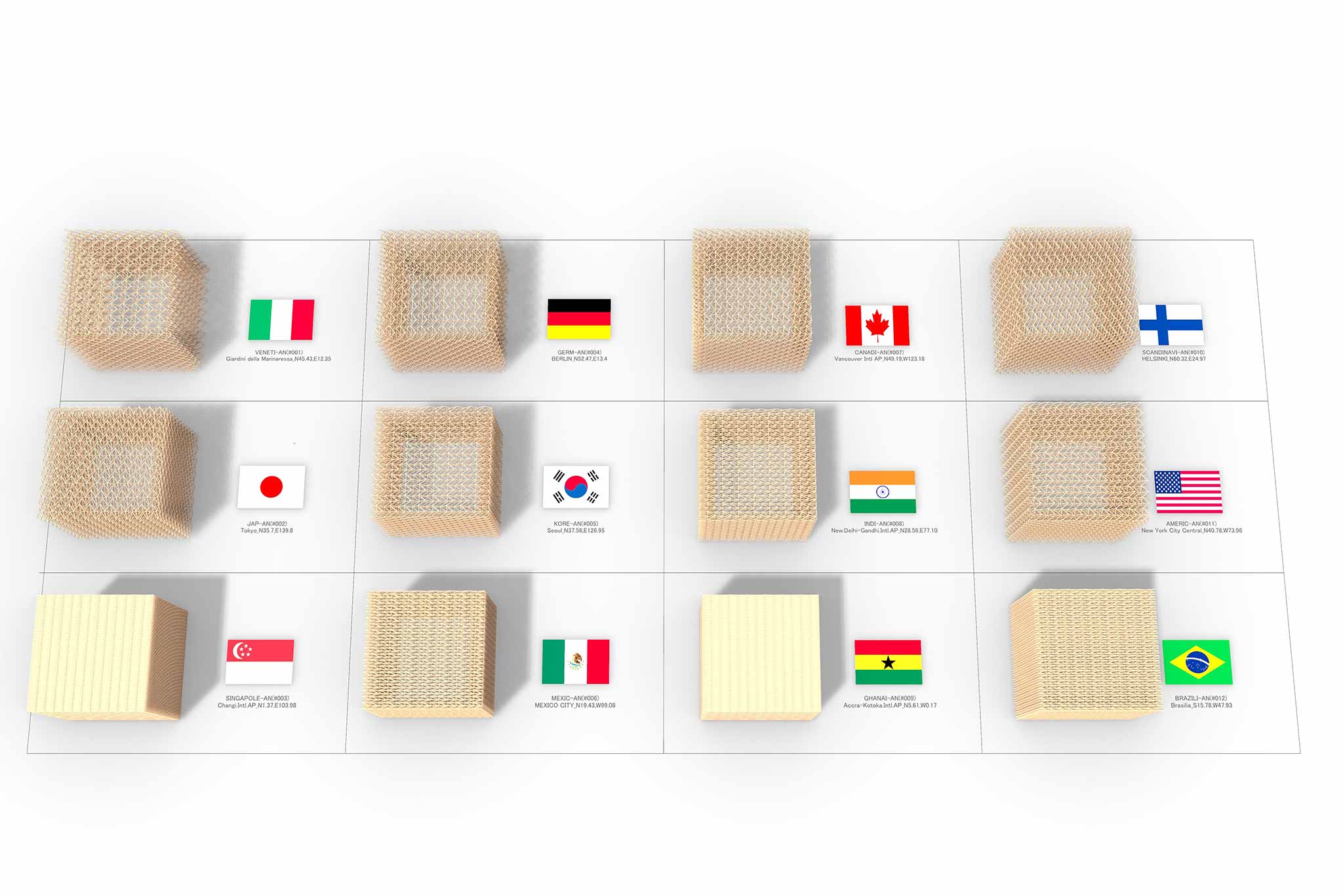
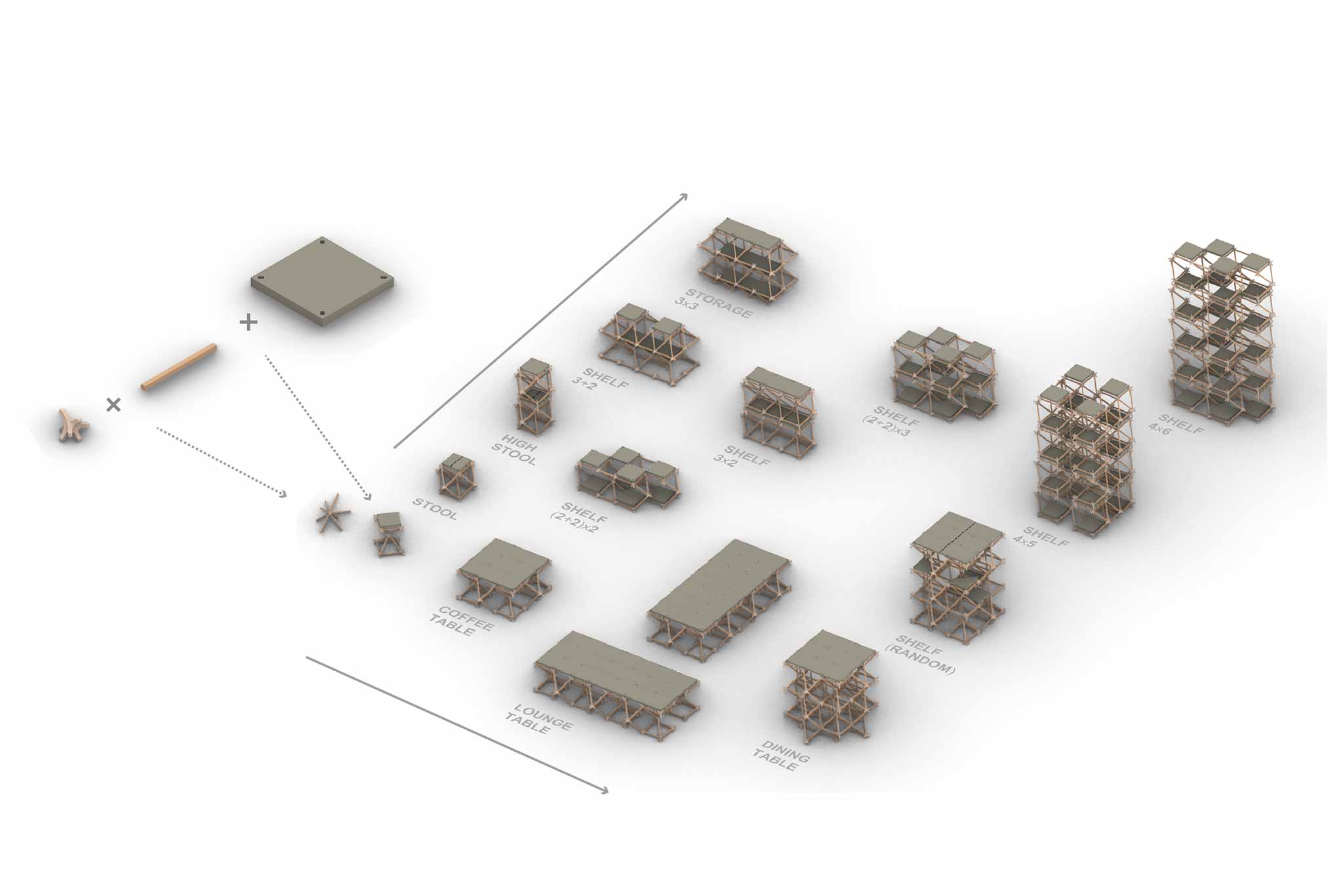
Credit
【Design . Construction】
TakaakiFUJI(Mitsubishi Jisho Design・tyfa/Takaaki Fuji + Yuko Fuji Architecture)
Hiroya INAGE(Mitsubishi Jisho Design )
De Yuan KANG(Mitsubishi Jisho Design Asia)
【Production . Collaborators】
Kota Machida (fabula)/Manufacturing of food waste components
Mitsuru Muroshima(Muroshima Seiko) /Manufacturing of molds for food waste components
Nippon Kako-Kizai/Manufacturing of paper waste paper tubes
Osamu Oide(SilicaGen) /Waterproofing treatment
Shuji Nakano (IWS) /Manufacturing of cork flooring materials
【Tea Ceremony】
Souryou Matsumura(Mucha-Kucha Inc.)/Tea master
Keita Uno(Mucha-Kucha Inc.)/Producer
【Photography】
Shohei Yokoyama/@Japan
Yuta Sawamura/@Venice
【Special Thanks】
YAU ・YurakuchoArt Urbanism
Joseph Canouil(Mitsubishi Jisho Design)
Mitsubishi Jisho Design Model Production Department
Shinto Tsushin Circular Design Studio
PO LLC
【Supported by】
Yoshino Design Art Foundation
【Organized by】
European Cultural Center Venice Biennale “TIME SPACE EXISTENCE” 2023
Related Link
Artist
Tea MasterSouryou Matsumura
The TEA-ROOM members
Associate Professor of Urasenke Tea Ceremony
Representative of SHUHALLY tea ceremony class
He is the first heirloom tea master. While wandering in Europe as a student, he realized that he didn’t know much about Japanese culture even though he was Japanese, and started learning tea ceremony after returning to Japan.
After returning to Japan, he started to learn tea ceremony. As a member of “SHUHALLY Project”, he runs tea ceremony classes and tea parties with the motto of “making tea ceremony more free and fun”.
